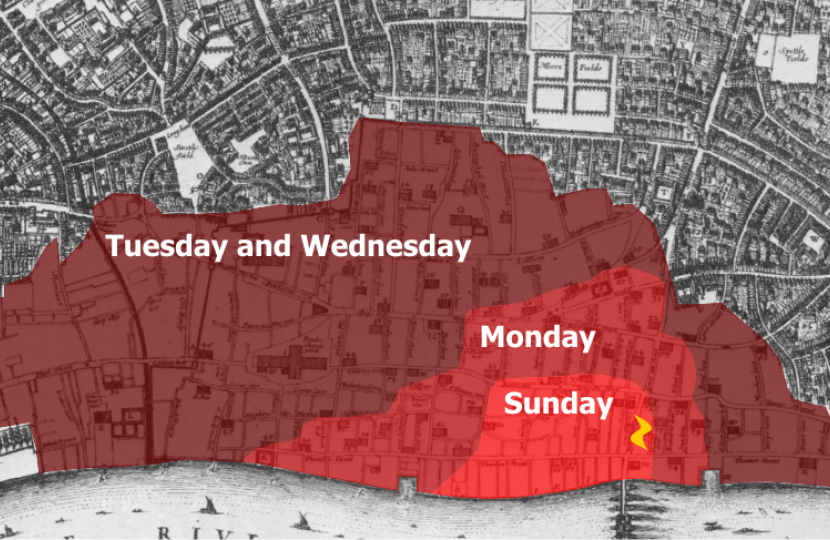
The Great Fire of London swept through the city of London from Sunday, September 2nd to Wednesday the 5th1666.
The fire changed the city forever, though the Great Hall of the Guildhall survived when many of the surrounding churches did not.
The fire spread quickly, fanned by the east wind and fed by the tinder-dry wooden frames of the houses, which almost touched across the narrow streets. It caused chaos and devastation as residents packed their goods and fled for the river or open spaces beyond the Roman walls.
The statistics of what was lost are shocking still: 13,200 houses in 400 streets had been burned down or demolished to create firebreaks, with 70,000-80,000 people made homeless. Eighty-six of the City’s 109 churches were either badly damaged or destroyed. Among the other historic buildings lost to the flames were 44 company halls and Baynard’s Castle, the medieval setting for the coronations of Edward IV and Mary I. Happily few people died in the fire, with only six fatalities recorded.
To commemorate on Saturday the river Thames played host to re-enactment. A huge replica of the capital was set on fire: The 120-metre structure of 17th century London became a spectacular blaze.
The Museum of London is hosting an exhibition with a programme of fire themed walks and tours, plus free afternoon lectures, workshops, family activities, children’s sleepovers and festival days.
